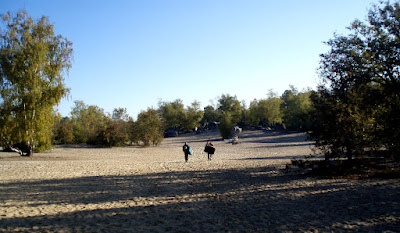This article appeared in the Voice for Arran in Sept 2011 as part of a series of features on wildlife and walking on Arran.
I recently discovered that I am afraid of snakes. This sudden self knowledge is surprising in itself, but more astonishing to me is that I have suppressed this all my life until now.
A snake in the grass....
I remember finding my first adder- I am walking on a Norfolk beach with my father. A small scaly creature lies inert in the sand and my Dad yells at me to keep the dog away. I recognise danger, but blank my mind to fear. Dad tells me that only foolish people are bitten by snakes. I’m a little girl but I am brave.
Other encounters- a pair of dark sequins hissing at me from the heather, a flat head tensioned to strike, a black and olive pattern darting away. I respond with the same stillness I use to ignore wasps at a picnic, I don’t notice my heart bouncing in my ribcage or the adrenaline flooding my veins.
This summer, survey work has taken me more than ever in to the adder’s domain and I have come to expect these exciting meetings. Now I quiver at a twisted branch of heather, or jump back at the zigzag silhouette of a dead bracken frond. When I see a real snake, I tremble with relief as my foot hovers above the angry coils. The statistics are in my favour- adder bites are rare and as my Dad said, usually inflicted on the hands of the foolish and the curious, but the odds are against me, as I must have tripped over 20 or so adders this summer alone.
My relationship with nature has been coloured by what I have read, watched and been taught. In order to understand the world around me I swallow facts and try to view the natural world through the objective lens of science. And yet it is virtually impossible not to respond emotionally to the wildness when I meet it face to face. Who cannot be delighted by the big innocent eyes of a red squirrel, peeking out of a tree, or the quicksilver energy of a pair of otters playing together in the surf? And we make value judgements about nature all the time. Sparrowhawks, magpies and black backed gulls are often reviled as thieves and murderers, but we easily forget that red squirrels sometimes eat birds’ eggs too.
My objectivity was recently tested to its limit as I stood on a stretch of rocky coastline watching a pair of otters fishing in a sheltered bay. At first they seemed to ignore each other, but as they drifted ever closer together I waited for the expected game of rough and tumble. Instead, as they pulled up nose to nose, an eerie caterwauling began, and within seconds they were trying to tear each other apart. The speed, violence and complete lack of mercy that the larger otter showed the other were shocking. Eventually the loser escaped the frenzied grappling and was pursued at speed through the waves and out to sea. Finally getting away, it was clear that this otter was badly injured, its tail held stiffly out in the water as it swam. Unable to intervene, I was shaken and upset with myself for being so- fighting with lethal ferocity between rival male otters is the natural order of things.
We humans are unsurprisingly drawn to the parts of wild nature that are easiest for us to identify with. We are afraid of, or ignore the unsettling and the unpleasant. This is a huge challenge for conservationists who seek to protect entire ecosystems, not just cute and fluffy brand ambassadors. One wonders how much simpler the COAST campaign for a marine reserve in Lamlash Bay would be if it were dolphins or otters under threat from scallop dredging, rather than the strange and squidgy life of the sea bed.
We prize the rare over the commonplace. One species whose fortunes have seen a dramatic turnaround is the common buzzard. Growing up as a young birding geek in East Anglia in the eighties, I had never seen a buzzard. Their numbers plummeted during the 20th century due to persecution, pesticides and myxomatosis in rabbits (an important prey animal for buzzards). On a family holiday in the Black Mountains, I searched empty skies every day until at last I saw that heavy outline now so familiar in every British county. The buzzard has made a fantastic comeback, but has been relegated from magnificent and rare raptor to “just a buzzard” by bird watchers. Some people have asked me if buzzards are now considered vermin- we assume that if something is common, it is a problem that must be controlled. In contrast, the muddy brown fields of my youth were filled with giant flocks of boring lapwings. Today they are in catastrophic decline and my heart bursts with joy when I see a just small troop tumbling overhead.
Is it possible to value all of nature equally? Should we even try? What about biting insects? Some species are no doubt troublesome and even dangerous to human health. But each has a unique place and we are only beginning to understand the complex interspecies relationships in a healthy ecosystem. I have to hold my hands up to being genuinely afraid of the fierce little adder, but I count myself lucky, (especially while I remain unbitten), to live in a place where these animals still thrive. I’ll take the infested bog over the concrete jungle any day.
To put it simply, even midges have a value to bats and swallows, moorland birds eat ticks, and if you look deeply in to rainbow eyes of a cleg, you will see beauty reflected there.
And then it bites you.





